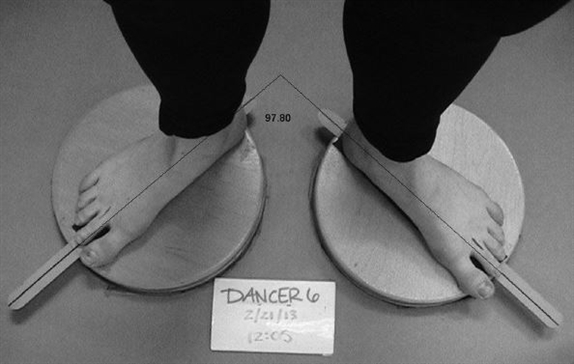Blog
Blog
Core Control: “Not just abdominals”
Author: Clara Fischer Gam on behalf of the IADMS Education Committee
In previous Education Committee posts we’ve spent time talking about turnout, and mentioned the importance of core control and neutral alignment in maximizing rotation of the legs. Here, we spend a bit more time focusing on core control and what that might mean.
Read Article5 Questions with Susanna Piculell
This month's featured member is Susanna Piculell of University College London. Susanna is a physiotherapist specialising in dance medicine. Her areas of interest include injury prevention, preseason functional screenings, periodization for dancers and performance psychology.
Read ArticleAn intervention to improve turnout - Research Study
Author: K. Michael Rowley
Many posts on the IADMS Blog from the Education Committee have been focused on the anatomy and control of turnout. But does awareness of where turnout comes from and exercise targeting hip external rotators actually make a difference in turnout a dancer can achieve? According to research from Florida State University published in the Journal of Dance Medicine and Science, the answer is yes.
Read ArticleTo torque or not to torque: The summative contributions of the knee, tibia and foot in the use of turn out
Author: Maggie Lorraine on behalf of the IADMS Education Committee
In a previous post we examined the structure of the pelvis and hip joint and observed how the anatomical variations of the structure can impact on an individual’s ability to externally rotate their legs in the hip socket (turnout). We know that in most cases, dancers do not possess perfect turnout or complete external rotation from the hip. Often turnout is viewed as the placement of the prescriptive positions of the feet on the floor, however it is important to remember that turnout is an aligned movement of the whole leg from the hip joint culminating in the centering of weight over the foot on the floor whilst dancing. Ergo turnout is an action not a static position.
Read ArticlePhysiotherapy with the heart of a dancer – a personal history
Author: Dinah Hampson
When I was five, I saw my first full-length ballet and fell in love. I begged for lessons and studied dance for the next ten years. Despite passion, talent and training I didn’t have the physical facility for a career on the stage and I chose a different path. Ballet is defined as an artistic dance form performed to music using precise and highly formalized set steps and gestures. I assumed my years of studio time were forgotten when university led me to a career in physiotherapy.
Read Article5 Questions with Claire Low
The Student Committee would like to introduce “5 Questions With…” a column designed to give students an opportunity to share something about themselves, their research, and their involvement with the International Association for Dance Medicine & Science (IADMS). Our first featured member is Claire Low, recipient of the Student Research Award in 2014 at the 24th Annual Meeting in Basel, Switzerland. She graduated from Glasgow Caledonian University and is currently a physiotherapist at Singapore General Hospital. Her areas of interest include dance injury, injury prevention, and Pilates for dancers.
Read ArticleApproaching turnout with young dancers: Muscles that rotate the leg
Author: Elsa Urmston on behalf of the IADMS Education Committee
All too often we see our young dancers forcing their turnout in an attempt to achieve the illusive 180 degree line of the feet whilst often compromising the neutral line of the spine and pelvis and putting the knees, ankles and feet at high risk of injury.
Read ArticleDancers have the answers when it comes to dance floors
Author: Luke Hopper
So you are starting a new school or planning a performance tour, you check out the venue, look at the floors and some red flags go up. All of a sudden you have a difficult decision to make. Is this floor sprung and going to be ok for my dancers? Here are a few tips from some recent research that can help you if you have experienced this common problem.
Read ArticleGetting involved in IADMS! - A Student Perspective
Author: Sarah Beck
I attended my first IADMS annual meeting in Birmingham, UK. I remember being too scared to approach esteemed researchers and practitioners didn’t have the confidence to ask questions following presentations. I remember hoping that in the future I would be more confident and wanted to be much more involved in the association. I had applied to be on the student committee and just after the Birmingham meeting was delighted to hear that I had been elected as the Chair. I have received a great deal of support and encouragement from IADMS staff, Board members, and other committee chairs and have been able to develop the student committee under this.
Read ArticleWhat has the “Anatomy of the Hip Joint” got to do with Louis XIV?
Author: Maggie Lorraine on behalf of the IADMS Education Committee Classical Ballet is a dynamic art form. The art of ballet has undergone change since its birth in the mid-17th to early 18th Century. It is interesting to review the description of the organization of the body, codified by Pierre Beauchamp (1631-1705). The five positions of the feet are described as turned out ...
Read Article





 BACK
BACK